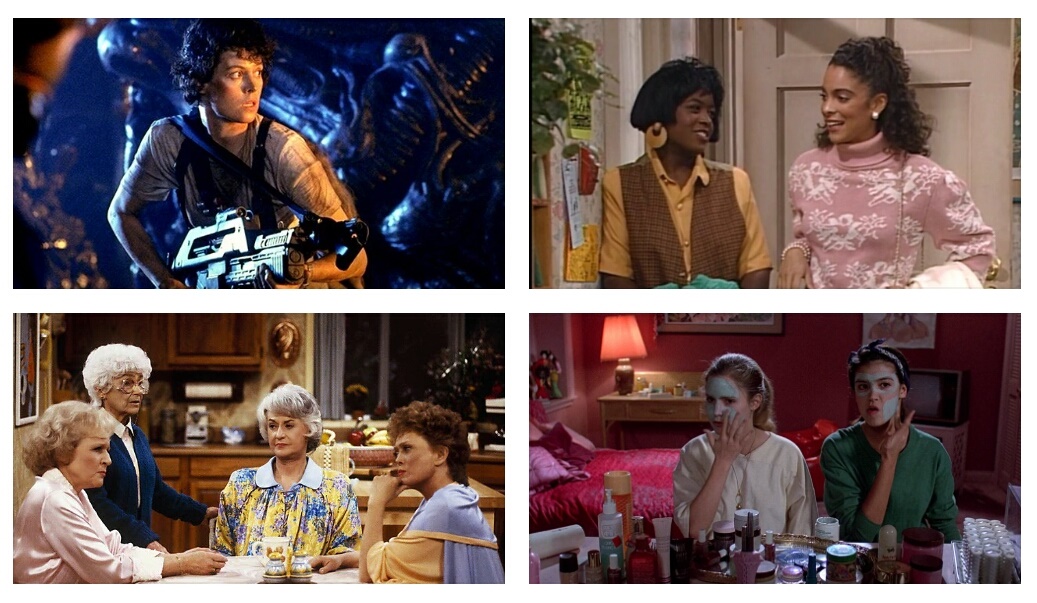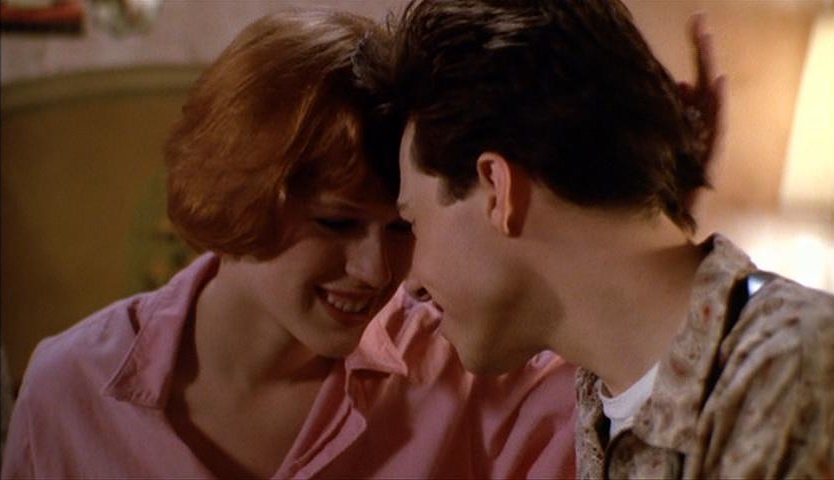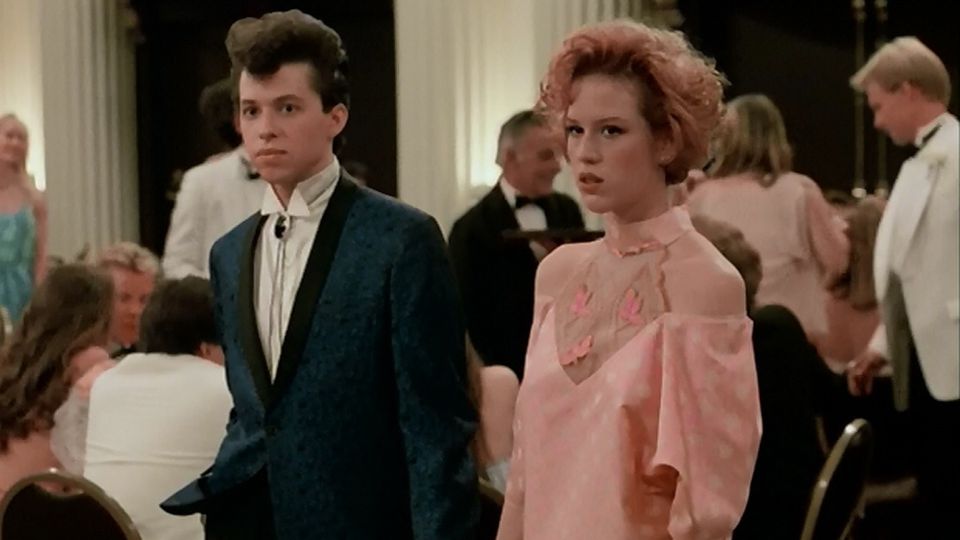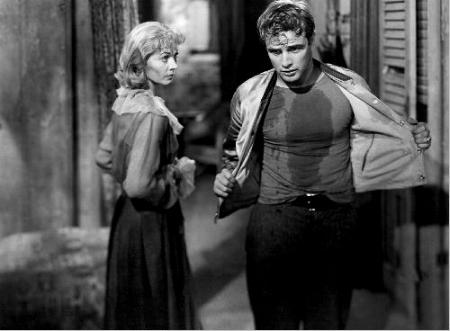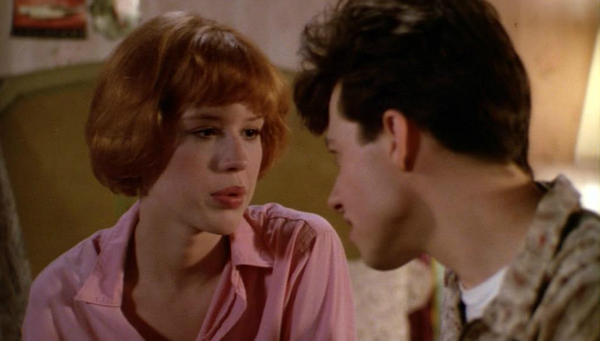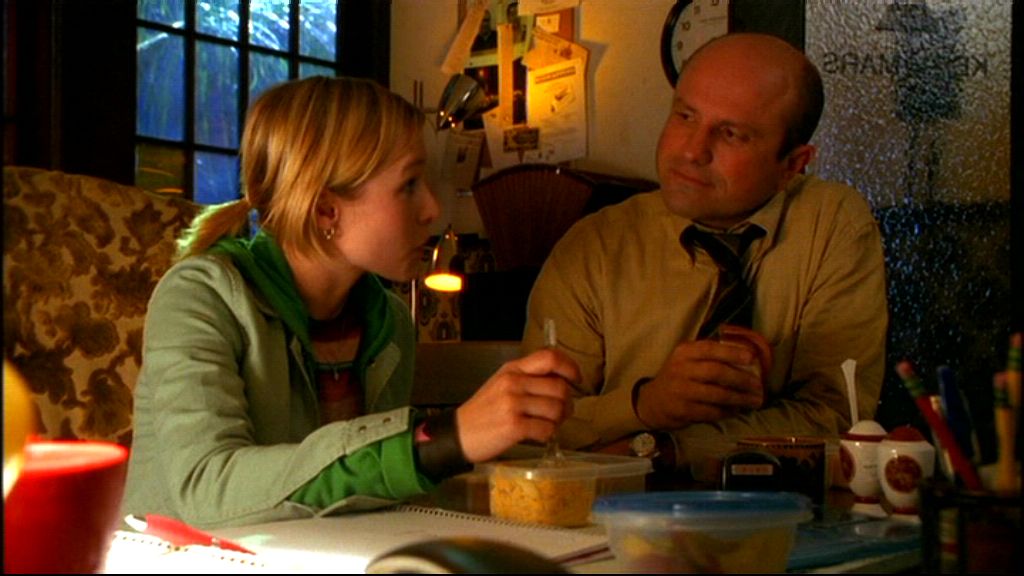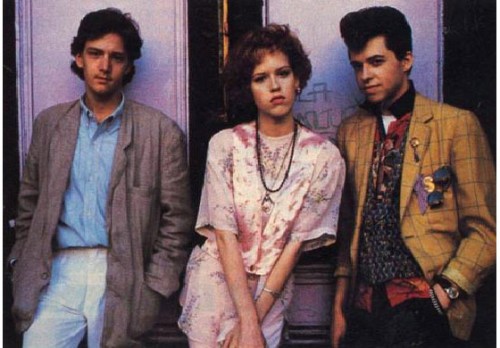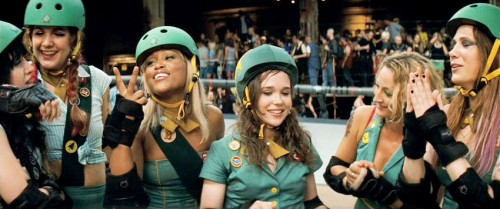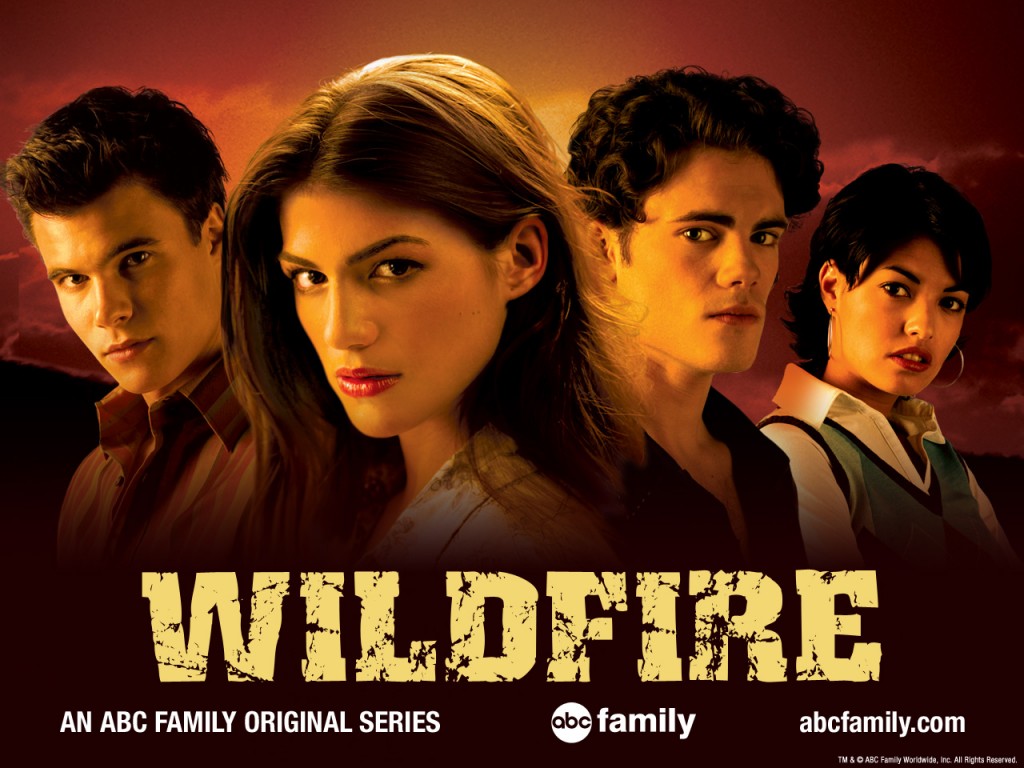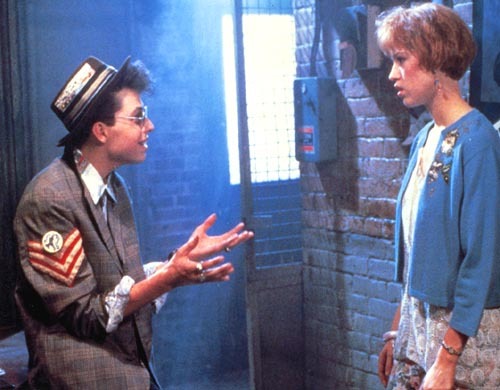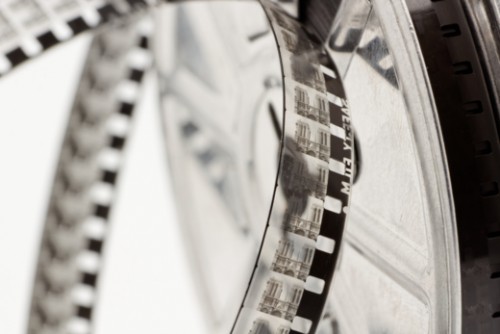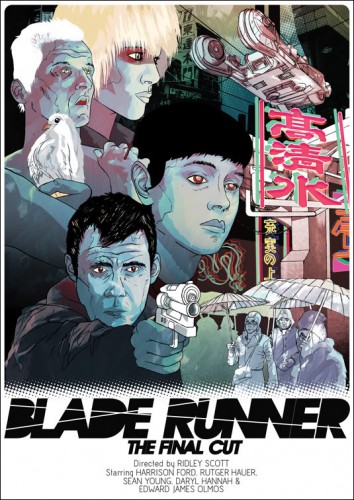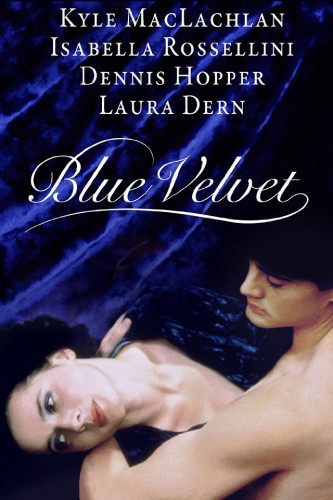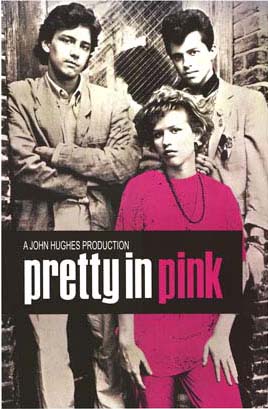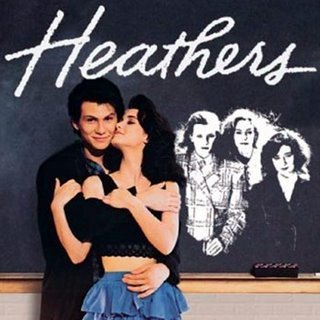‘Pretty in Pink’: A Desire for Autonomy by Siobhan Denton
Re-watching the film recently, it seems apparent that rather than Andie allowing herself to submit to Blane and all that he represents, her narrative arc is really a search for a sense of autonomy rather than a desire to transition into a world of privilege. … Andie is not happy, despite outward appearances, and it is clear that for her, Blane represents an opportunity to take control of her life, to become increasingly autonomous in her decisions.
‘A Different World’ Shook Up My World by Shara D. Taylor
A Different World will forever hold a special place in my life. Set at the fictional, historically Black school Hillman College, it became my North Star to an experience largely foreign to me — undergraduate life. It gave me insight into the strength gained from friendships with Black women. … Seeing images of young, gifted, and Black women pursuing higher education at a historically Black college or university (HBCU) shaped my vision for my life.
Historical vs. Modern Abortion Narratives in ‘Dirty Dancing’ and ‘Fast Times at Ridgemont High’ by Tessa Racked
Given this climate, it is somewhat surprising that two mainstream Hollywood films, Dirty Dancing and Fast Times at Ridgemont High, would take progressive approaches to a topic like reproductive justice. While Dirty Dancing remembers the realities of abortion pre-Roe v. Wade and illustrates the role that class plays in access to abortion, Fast Times at Ridgemont High shows a main character who exercises her right to choose without trauma or punishment, while managing to keep a relatively light tone.
Feminism and Classism in ‘The Legend of Billie Jean’ by Horrorella
The Legend of Billie Jean addresses questions of gender and class that are as real today as they were in 1985 and sets its story within the struggles against the patriarchy and the ruling wealthy class by people who all too often fall victim to those oppressions. … As the story progresses, Billie Jean’s flight becomes more than just the desire to escape from a situation that sees her and her friends unfairly on the wrong side of the law. She wants wrongs to be set right. … She wants dignity, and respect – truly, what she is after is equality.
10 of the Best Feminist Comedies of the 1980s by Jessica Quiroli
9 to 5. If I may, this is the greatest women’s comedy of all-time. So perfect on every level, it’s hard to know where to begin; but how about with the three main characters? … Played by Jane Fonda, Dolly Parton, and Lilly Tomlin, this wild ride is a classic in any era, but a rare, feminist gem of the 80s.
“You Have No Power Over Me”: Female Agency and Empowerment in ‘Labyrinth’ by Kelcie Mattson
So what distinguishes Labyrinth from the Hero’s Journey tropes it so closely follows? Its protagonist. Sarah is the hero of the story. She doesn’t need to be saved because she’s the rescuer, and she carries the plot forward with her resourcefulness, tenacity, and self-actualization. … But Labyrinth’s dramatic tension is centered entirely in a young woman’s mind as she navigates a tricky tightrope between fantasy and reality, dreams and goals, past and future, and discovers the kind of woman she wants to be.
‘Working Girl’ and the Female Gaze by Allyson Johnson
We so often view films through the Male Gaze with camera shots that are more interested in capturing the way a woman’s body looks under the guise of “sex sells” that it’s become somewhat of the norm. While Working Girl is appreciative of the beauty between Sigourney Weaver and Melanie Griffith, it employs a “female gaze” so to speak with Harrison Ford. … Also a change of pace is the fact that by the end of the film, Katharine and Tess aren’t fighting over Jack. They’re fighting over their place in the working world and, to narrow it down to a single moment, they’re fighting over a great idea that Tess had, one Katharine wishes she could have come up with and resents Tess for.
‘Videodrome’ and the Pornographic Femme Fatale by Dr. Stefan Sereda
Blade Runner (1982) featured two fembots-turned-fatale (and another faux–fatale) whereas David Cronenberg’s sci-fi-horror-noir Videodrome updated the femme fatale as a response to media-saturated late twentieth-century culture. … Regardless, in Cronenberg’s prophetic film, the femme fatale is reborn and unleashed to warn of contemporary dangers, including how women’s media representation as sex objects is connected to capitalist propaganda, often with the intent of making a violent agenda seem pleasurable.
The Feminisms of ‘Born in Flames’ by Heather Brown
It’s no coincidence to me that three years later Lizzie Borden would direct Born in Flames, a film that depicts a collection of different feminist voices all aligned in a common goal of resisting what bell hooks terms the white-supremacist-capitalist-patriarchy. … Instead of acting out carceral feminism, which relies on law enforcement and state violence to combat violence against women, the feminisms of Born in Flames create justice rather than restore “order.”
Did Gender Alter the Tone of the ‘Alien’ Franchise? Implications of Narrative Femininity by Kayleigh Watson
It is science fiction fact however, that Ellen Ripley should not have been “Ellen Ripley” at all. Dan O’Bannon’s original script for Alien stated: “The crew is unisex and all parts are interchangeable for men and women.” …In Aliens – the 1986 sequel directed by James Cameron – both Ripley and the alien are further solidified as female. Cameron pushed the series into being specifically feminist, having Weaver reprise the role in more extreme circumstances. She gained a surrogate daughter – Newt – to protect, more men to fight, and an Alien Queen – one who breeds – to defeat. … Through the course of the film, we come to an implied understanding that is wholly complicit in their both being mothers, adding a subliminal layer that would not have been present had either Ripley or the alien been male.
‘She’s Gotta Have It’: The Audacity of Sex and the Black Women Who Have It by Reginée Ceaser
Looking back on the film today, I appreciate this film now because it centers on a Black woman who unabashedly is exploring and thoroughly enjoying her sexuality. By doing this, Spike Lee took long held beliefs and perceptions of Black women and pushed back on the constrictions and perceptions of society.
‘Jem and the Holograms’: Diversity and Female Empowerment by Horrorella
What I didn’t remember, and was pleasantly surprised by, was all of the diversity present in the show and the incredibly positive female role models that it presented to its young viewers. … It offered a positive statement on cultural acceptance and feminine strength at a time when children’s programming was lacking in both areas (and often still is today). The Holograms celebrated an ethnically and culturally diverse group of characters who came from a variety of different backgrounds.
Reagan’s America: Waiting to Die in ‘Testament’s Radiation Zone by Angela Beauchamp
[Atomic Bomb Cinema author] Jerome Shapiro disregards Testament because it is primarily about women’s suffering, yet this very acknowledgement of women’s powerlessness in a world that patriarchal governments have just blown up is feminist at its core. … This 1983 film created by women gave the audience such a grim picture of the near future, without the excitement of special effects or the hope brought by overcoming obstacles, that it was a call to action, a message to avoid this outcome at all costs.
‘Crossing Delancey’: Isabelle Needs a New Perspective on Life and Love by Susan Cosby Ronnenberg
This romantic comedy has always been more of a cult classic. But it was unusual in its female writer and director, along with its distinctly Jewish cultural setting, its generational custom-clash regarding matchmaking, and its conflicted independent protagonist, Isabelle, who could be read as a late 1980s precursor to ‘Sex and the City’s protagonist Carrie Bradshaw. An independent, straight single woman with a successful career, Isabelle has professional and romantic options, ambitions, and flawed preconceptions about the incompatibility of those options and ambitions as she tries to decide between an internationally acclaimed poet or a neighborhood.
Women Muscians in the 80s Used Music Videos to Expand Notions of Womanhood by Gwen Hofmann
…Women in music broadened visual representations of gender as their cacophony of voices inoculated the population to women of all ages, races, and socioeconomic backgrounds. Most intriguing about this “kaleidoscopic” decade is the way women in 80s music videos displayed these distinct portraits of womanhood. … The ladies of 80s music video brought forth new visual representations of women including: experiences in the workforce, issues of class, messages of power, and unique expressions of love and sex.
‘The Golden Girls’: The Legacy of a Lifetime of Wisdom and Laughter by Adina Bernstein
In 1985, television audiences were reminded that women of a certain age are just as vibrant, sexual, and as full of life as women half their age. They may also share a few life lessons along the way. The TV series ‘The Golden Girls’ — which aired for seven seasons — reminded audiences of all ages that life does not end at fifty for women.
‘Fast Times at Ridgemont High’: The Wisdom and Confidence of Linda Barrett by Angela Morrison
Phoebe Cates brings life to the energetic, worldly, confident-yet-vulnerable Linda. Her character is the heart and soul of the movie, as she gives Stacy (Jennifer Jason Leigh) advice on sex, relationships, and navigating her way through high school. … Linda’s attitude toward sex – which she passes on to Stacy – is that it needn’t be a big deal, but rather, should be seen as a fun and pleasurable activity for young women such as themselves. … She urges Stacy to make her own decisions, letting her know that she has the power to decide who she wants to have sex with, and when. The film never takes a judgmental attitude towards these young women, their sexual activities, and their frank discussions of sex.
The Vietnam War Through a Teen Girl’s Eyes in ‘In Country’ by Caroline Madden
Sam is an underrated, if not widely unknown 1980s heroine. She serves as a symbol for America’s 1980s attempt to reconcile with its most controversial war. The 1980s experienced a boom in Vietnam War films, as the temporal distance from the war allowed filmmakers to fully deconstruct the experience. Rarely is the locus of these films a woman. Sam’s character manages to break through the barriers of a primarily masculine film genre. In Country uniquely explores both the female and child experience of the Vietnam War and its aftermath. This is a departure from the wide variety of films depicting the male veteran’s assimilation into post-Vietnam life, such as Born on the Fourth of July (1989) or First Blood (1982).
Revisiting ‘Desert Hearts’ and Its Lesbian Romance by Angela Beauchamp
For heterosexual women, movies and television series show them every day what a loving relationship is and what the expectations are to grow up, fall in love, and find a handsome prince (however flawed that may be). For lesbians prior to Donna Deitch’s Desert Hearts, nothing of the kind existed on-screen. … It is a conventional romance, which is one of the reasons that it is so successful.
‘Pretty in Pink’: The Only Team to Be on Is Team Andie by Isabella Garcia
I fixated on the Team Duckie vs. Team Blane aspect of the film so much that I entirely missed the point. I was so Team Duckie that I blamed Andie for not choosing him. … It wasn’t until I grew up some more, graduated high school, and went through several re-watches that I realized I had fallen into a trap that society has conditioned us to fall into: the dreaded sexist “friend zone.” … It was wild to me that Andie didn’t like Duckie back, but after recently re-watching the film I don’t know why I ever blamed her. She stuck true to what she wanted.
How ‘Big Business’ Made Big Business with Two Women Big in the Business by Kyle Sanders
Yet what sets this 80s flick apart from most films of that era is the fact that the four protagonists are all women AND completely independent. … Ultimately, it is Midler and Tomlin who save the film from being just another forgotten comedy of the 1980s. The two stars bring a certain gravitas to the screen — a perfect combination of comedic timing and contagious chemistry in scenes that might otherwise fall flat in the hands of other capable actresses.
‘The Stepfather,’ Toppling Patriarchy, and Love of 80s Horror Ladies by Eva Phillips
Stephanie emerges as a poised, perspicacious, and resilient female lead. She is a wonderfully surprising alternative from most of the panoply of horror heroines who are tortured, fight, and scream their way through the terrifying films of the 80s. … Stephanie embodies what each of the archetypally male characters in the film fails to, and in doing so transcends the clutches of gender expectations in the film and in a genre that is so often besotted by explicit or implicit gendered presumptions.
Sheila E.’s Agency as an Artist in ‘Krush Groove’ and Beyond by Tara Betts
But Sheila E. represents a woman’s creative musical power in an early hip hop film dominated by male artists. … As we consider hip hop’s presence in U.S. films and documentaries spanning the globe, it is also reasonable to consider that Sheila E. has one of the biggest roles for a woman that was written in the spate of films that began portraying hip hop culture.
Ripley, Sexism, and Classism in ‘Aliens’ by Adam Sherman
One of the most enduring female action heroes in the 80s is Ellen Ripley. In the 1979 movie Alien, we were introduced to her as a competent, no-nonsense space trucker who survived where the rest of her crew did not. However, it was not until 1986 that her status as a female badass was truly confirmed in the follow-up, Aliens. Yet, in-universe, it took Ripley much of the movie to gain any respect. The mix of classism and sexism Ripley faced is something that I think made many women identify with her even more.
‘The Fog’: 5 Women, an Environmental Crisis, and No Forecast for Friendship by ThoughtPusher
Before watching the movie with a more critical lens, I reminisced that these strong female characters drove the community response to crisis as they began to interact and even came to depend on each other. … But upon further examination, these characters only come together in a geographic sense rather than develop significant strength through the social bonds of supporting each other. … It seems like The Fog exposes the idea that strong women can’t have any meaningful relationships that might endure and even help them survive and understand themselves better through tough times.
Rethinking ‘Say Anything’ and the Film’s Actual Protagonist Diane Court by Charlotte Orzel
The problem isn’t that audiences misremember Lloyd Dobler; it’s that they forget about Diane Court. Even though the two characters share the screen more or less equally, Diane (Ione Skye) is often treated more as a love interest than a romantic lead. … Not only is Diane an equal player in the action; she’s the film’s protagonist. While we spend a great deal of time with Lloyd, the movie’s story is structured around Diane’s life. … While Diane has a clear narrative of growth, Lloyd is a static character.
Black Women in 1980s Horror Films: Tokenism and Regression by Ashlee Blackwell
However, I do thoroughly enjoy and sometimes defend 80s horror and the Black (female) characters I can find, but it’s crucial to examine the narrow confines of their characterization. … The 80s opened up a dialogue about where Black women’s place was not only in society, but in horror. Katrina demonstrates a stark fear of “the Other” who dwells beyond the parameters of the safe, White institutions, Sheila is a marker of assimilation and the rise of the Black middle class with a Huxtable like allure, while also being a Black girl nerd we like, and Epiphany is rooted in a past that Reagan’s message to America desired; a return to the good ‘ole days when miscegenation was taboo if not illegal.
